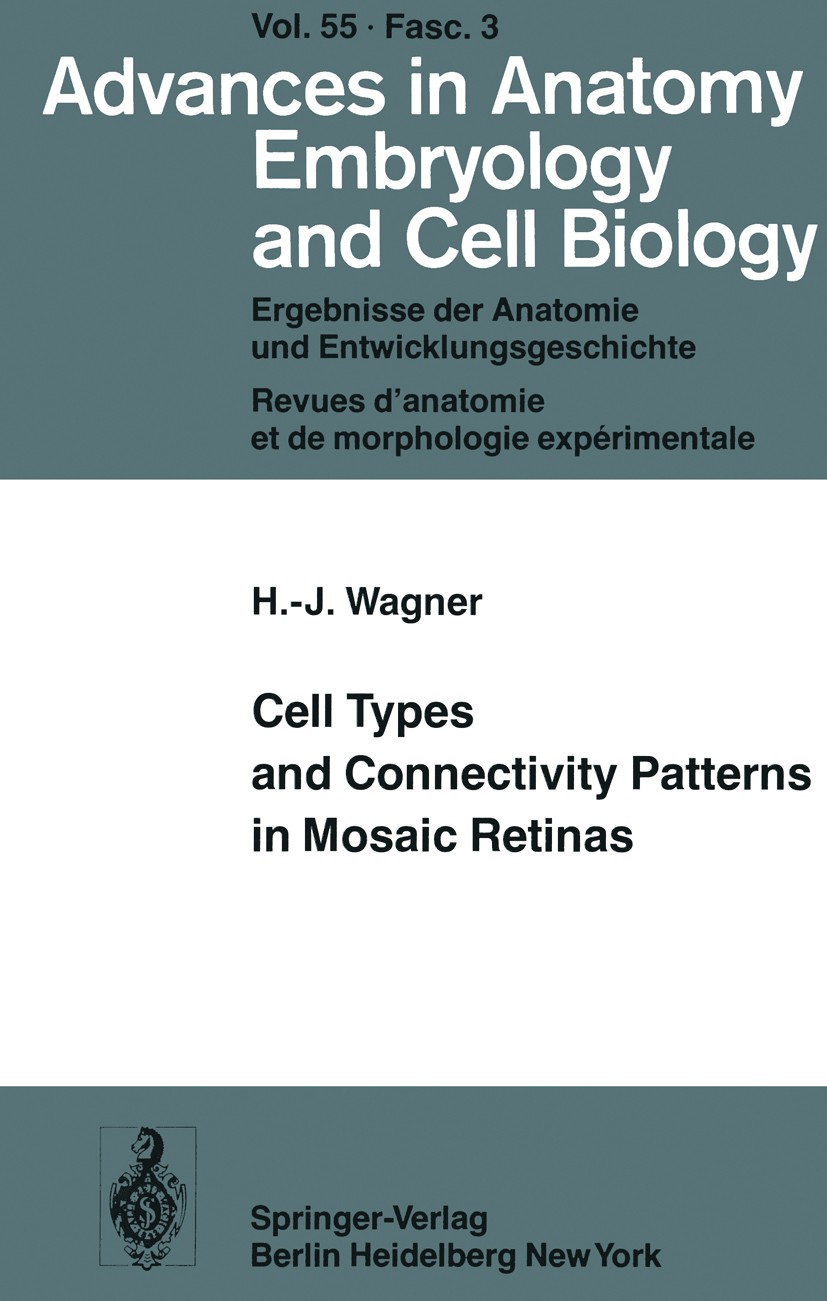| 书目名称 | Cell Types and Connectivity Patterns in Mosaic Retinas | | 编辑 | H.-J. Wagner | | 视频video | http://file.papertrans.cn/223/222895/222895.mp4 | | 丛书名称 | Advances in Anatomy, Embryology and Cell Biology | | 图书封面 |  | | 描述 | In many parts of vertebrate and invertebrate central nervous systems, groups of nerve or receptor cells can be found that are arranged and connected according to a precise, functionally defined pattern (Braitenberg, 1973; Santini, 1975; Strausfeld, 1976; Chan-Palay, 1977). In these cases, groups of cell bodies or synapses appear as basically similar configurations, which, however, are different in detail from each other. Such abstract patterns of connectivity are of a statistical nature and do not allow, in a given example, for the prediction of the localization or connections of a particular cell. "Wiring diagrams", therefore, can be obtained only from a multitude of individual observations. In contrast, in several sensory organs, concrete patterns occur that con sist of a regular, mosaic-like, and geometric arrangement of similar cell types. The constancy of such a mosaic allows predictions about certain units of the pattern on the basis of only a few exemplary observations. Typical examples are found in the visual system: In the compound eye of insects, each ommatidium contains a definite number of visual cells that are grouped around the optical axis in a hexogonal array (Kirs | | 出版日期 | Book 1978 | | 关键词 | adaptation; cell; electron microscopy; environment; histology; insects; invertebrates; microscopy; morpholog | | 版次 | 1 | | doi | https://doi.org/10.1007/978-3-642-67071-8 | | isbn_softcover | 978-3-540-09013-7 | | isbn_ebook | 978-3-642-67071-8Series ISSN 0301-5556 Series E-ISSN 2192-7065 | | issn_series | 0301-5556 | | copyright | The Editor(s) (if applicable) and The Author(s), under exclusive license to Springer-Verlag GmbH, DE |
The information of publication is updating

|
|
 |Archiver|手机版|小黑屋|
派博传思国际
( 京公网安备110108008328)
GMT+8, 2025-11-16 19:14
|Archiver|手机版|小黑屋|
派博传思国际
( 京公网安备110108008328)
GMT+8, 2025-11-16 19:14


